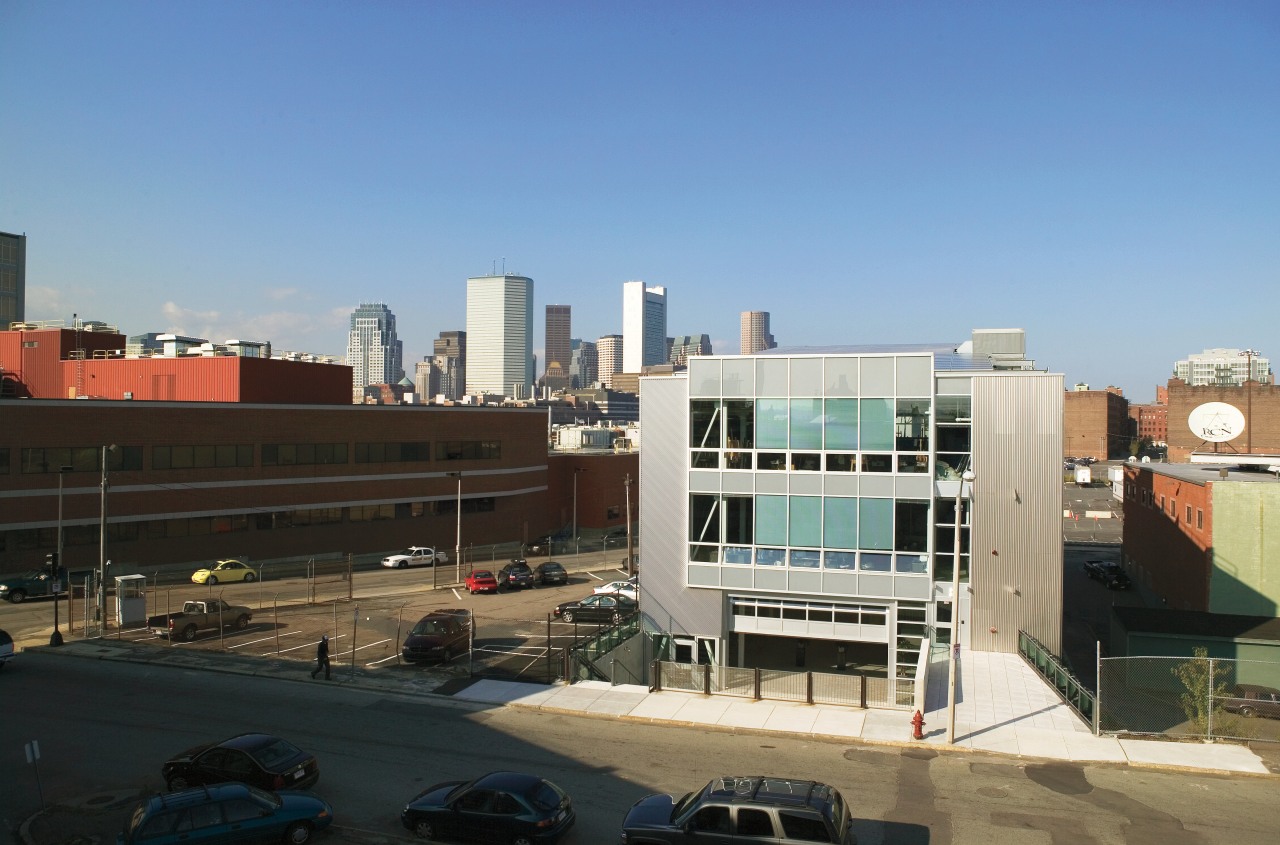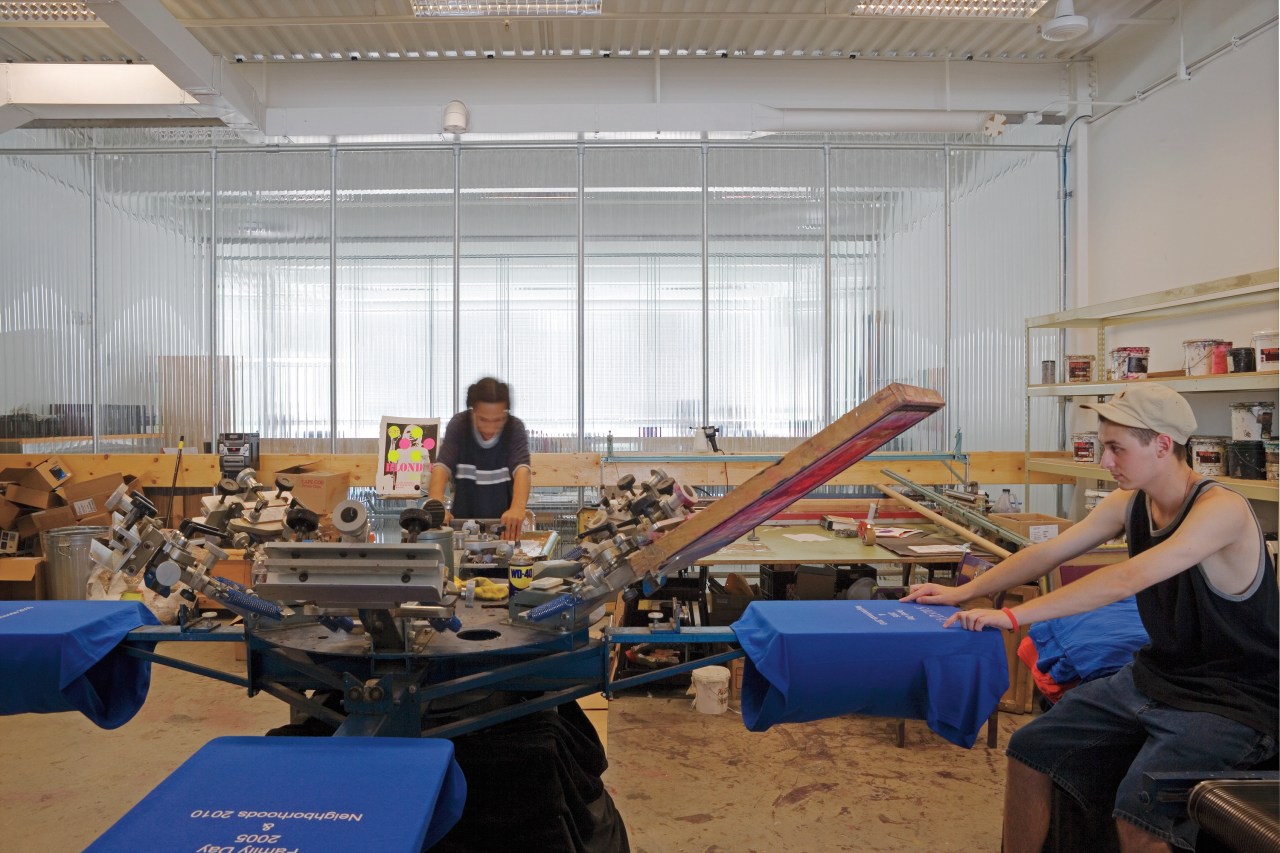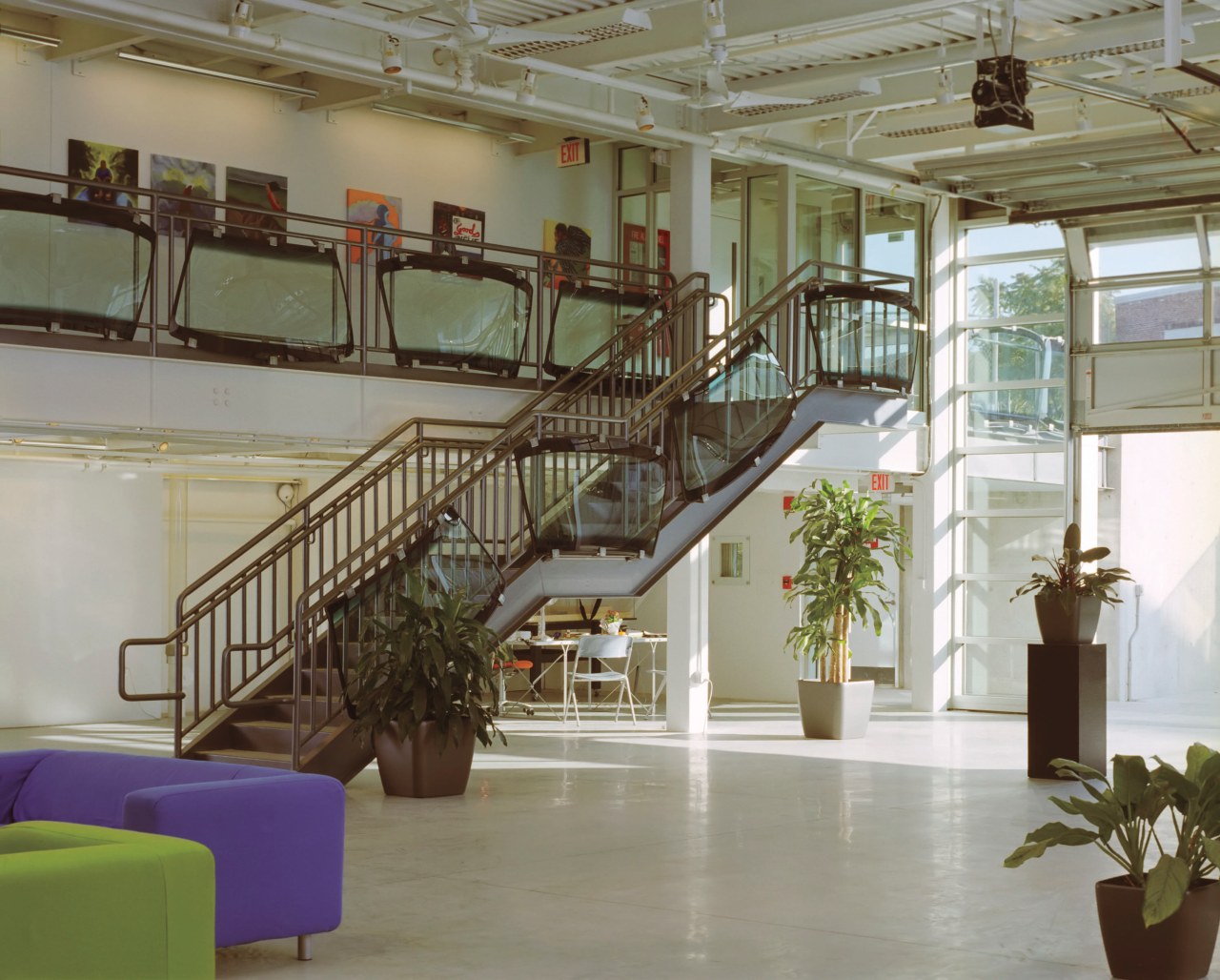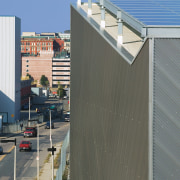All boxes ticked
A focus on environmental sustainability influenced every aspect of the design of this community arts centre a brownfields development in the heart of Boston

Encouraging self sufficiency is a focus for any community programme geared to bridging economic, racial and social divisions among young people. For Artists for Humanity (AFH), it was a philosophy that was also put into practice when the organisation built its first purpose-designed urban headquarters in Boston.
Architects Jim Batchelor and Pat Cornelison of Arrowstreet say AFH founder Susan Rodgerson conceived the EpiCenter building project as an extension of the organisation, with its social mission at the heart of the design principles.
"As the organisation is invested in the education and empowerment of young people, so the building is designed to model environmental stewardship," says Batchelor.
To this end, every decision, from the choice of building site to the materials and design, was underscored by the need to achieve the highest levels of sustainability on a tight budget. The site, in a brownfields industrial area, is small, but the centre was able to build to the boundaries, maximising the available land.
The designers say the most energy-efficient design proved to be a simple, functional, three-storey building, clad in corrugated stainless steel.
"Although the stainless steel was marginally more expensive than painted steel, it will be more cost-effective in the long term due its low maintenance properties," says Batchelor. "It also helped us achieve a stand-out building the organisation wanted to create a strong presence in the neighbourhood."

To encourage a connection with the street, a 7.3m-wide roller door opens from a large gallery space onto a courtyard, a little below street level. A footbridge links the gallery's mezzanine level to the footpath.
"Being able to fully open up the building to the outdoors was also a way to increase the usable space," says Cornelison. "The gallery is frequently used for functions, including private events, which help fund the organisation."
To ensure heat loads are not excessive, the 1860m² building is fully insulated, and glazing is limited to the north- and south-facing facades. The windows are large enough to allow diffuse light from the north, which is ideal for artists, to penetrate deep into the building. In winter, the sunlight from the south provides solar gain.
Transparent and translucent interior acrylic wall panels also help natural light penetrate the building, reducing the need for artificial lighting.
"Varying tiers of lighting are available, including energy-efficient T8 fluorescent fixtures," says Cornelison. "There are also daylight dimming controls and an automatic shut-off to reduce the peak electricity load. We were aware of the need to provide appropriate lighting for the artworks, however, so we have also installed incandescent lights to ensure high-quality colour rendition. These can be used as needed. Overall, the net effect is an estimated 78% reduction in the lighting load."
But it is not just the energy-efficient systems installed that provide savings the centre has its own 45kW photovoltaic system, with solar panels mounted on the sloping roof. The system, which is connected to the utility electric grid, provides 156% of the centre's energy needs. The surplus energy produced during the hot summer months is sold back to the grid, offsetting all the centre's other energy costs.

"The sloping roof was designed to capture the most solar energy, but it provides other benefits, too. It allowed us to install a mezzanine above the studio on the top floor, which affords a great view of the interior," says Batchelor.
Cornelison says natural ventilation has avoided the need for air conditioning in summer. At night the windows are opened and the ventilation system pulls cool air through the building, removing the day's heat. In the morning, the windows are closed to retain cool air. A heat recovery unit provides fresh air.
Water savings are another feature of the EpiCenter. The building has its own rainwater collection system, and an underground tank. The water is recycled for irrigation and for some washing activities.
Recycling also provided some of the materials used on the building. Abandoned train rails salvaged from the street form an exterior railing, and one of the centre's artists created balustrading from used car windscreens. Another artist used scraps of metal left over from the cladding to craft trough sinks for the bathrooms. The corrugated fibreglass toilet partitions were also designed by a centre artist, and are further evidence of the collaborative nature of the project.
Story by: Trendsideas
Home kitchen bathroom commercial design
9 tile shapes and finishes that think outside the square
Reflection and repose
Curves upon curves









